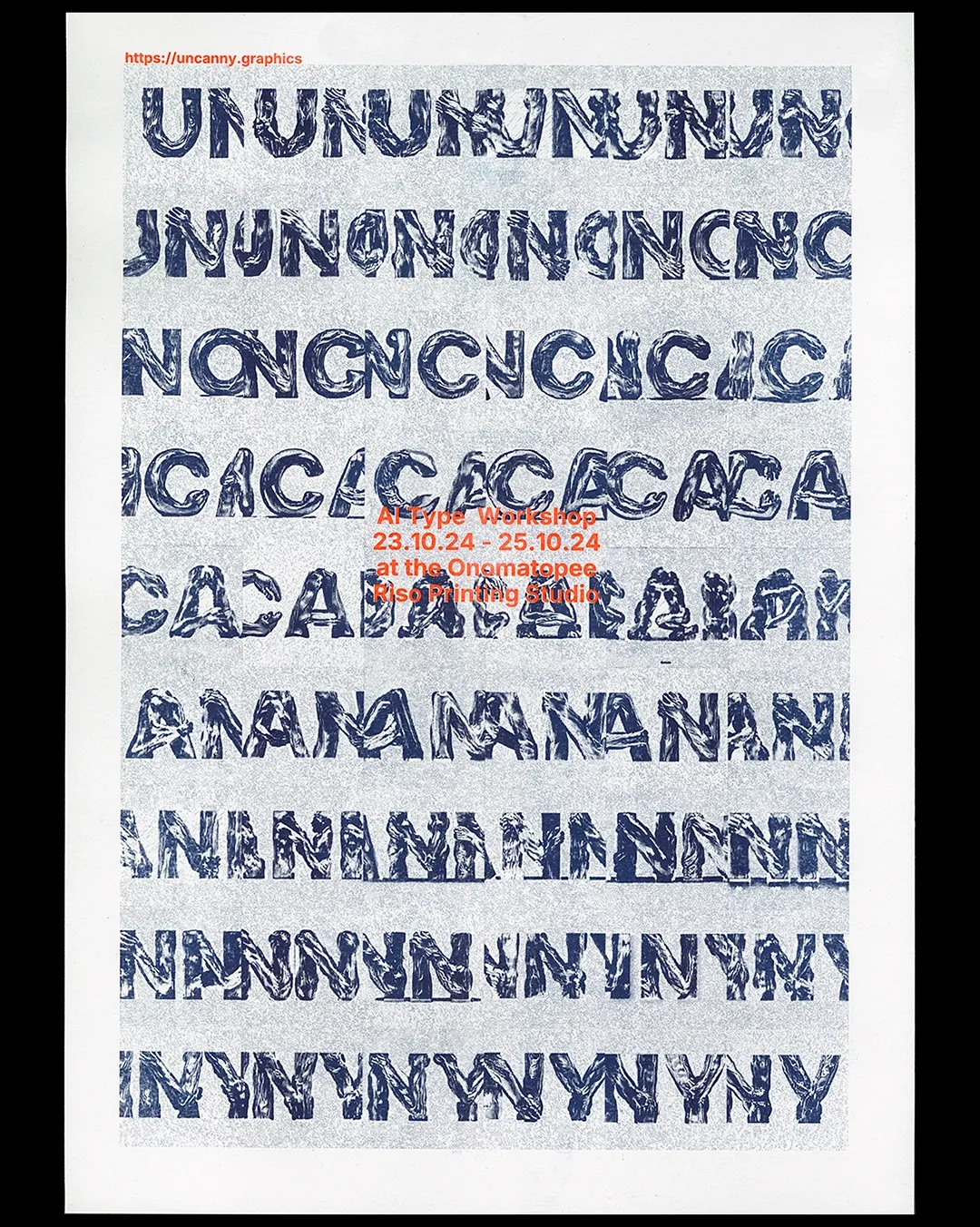uncanny type workshop
Explore the uncanny valley and embark on a journey of unpredictable type creation.
During this workshop, participants will learn general prompting techniques for instructing text-to-image AI models. They will then use this knowledge to instruct various custom models to create their own fonts. After an exploratory phase, participants will end up with a cohesive set of co-created letters and present them through type specimens.
In the field of type design in particular, exploring how AI can be applied to the design process is relevant, as no viable or mainstream solution has yet been defined, and exploring this space freely leaves room for truly new ideas. We have developed a pipeline for text-to-type generation based on the open source Stable Diffusion model, presented through an easy-to-use interface. This allows our participants to explore AI in the type design process without being overwhelmed by technical details and without being locked into inaccessible technical solutions from Big Tech.
By opening up this field for experimentation, the workshop provides a playful and safe space for participants to work with and explore artificial intelligence in type design practice.
The workshop is based on the research of Paul Eßer's type table and Francesco Scheffczyk's research on the democratisation and accessibility of AI interfaces within the KITeGG research project.
